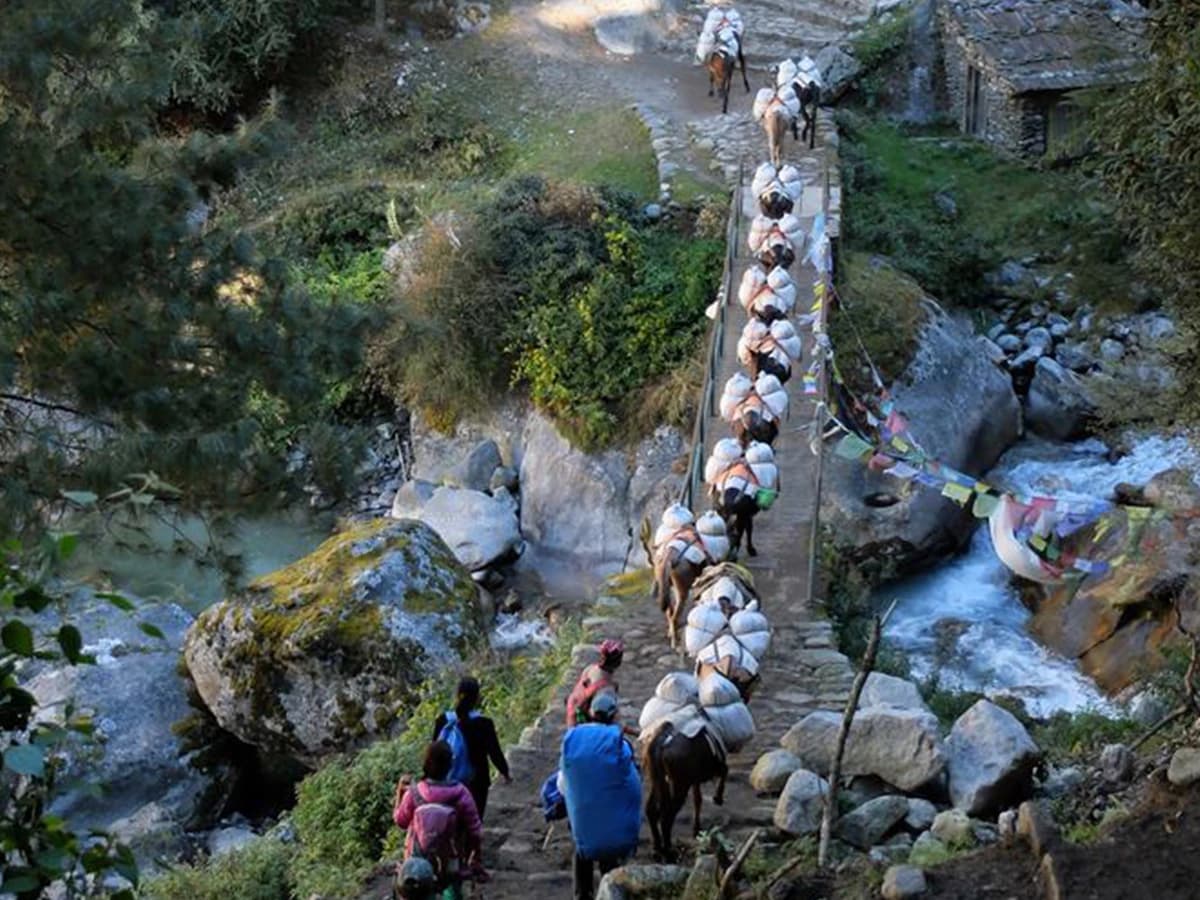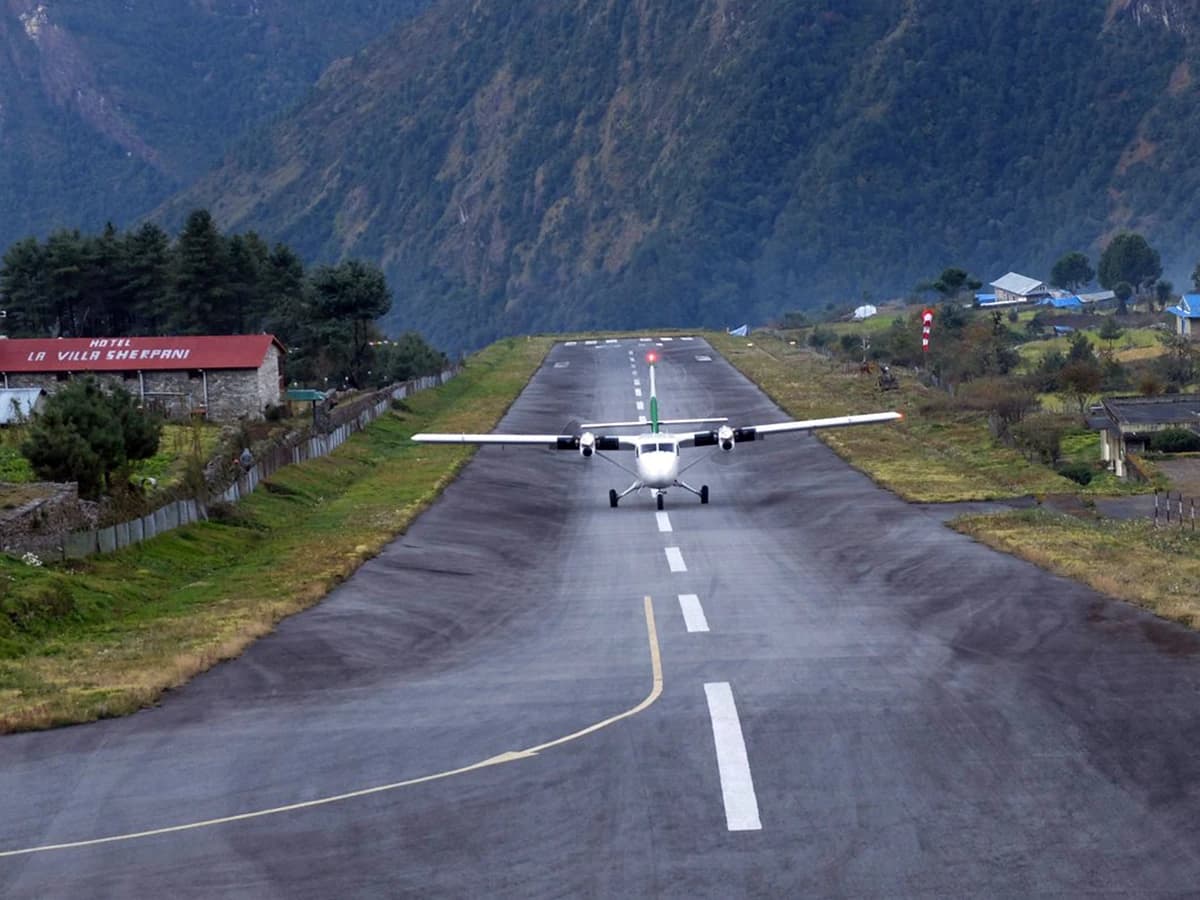Mera Peak Climbing is one of the popular 6,000 m expeditions in Nepal. Located to the south of the highest mountain in the world, Mount Everest (8,848.86 m above sea level), Mera Peak (6,476 m) is the tallest trekking peak in the country. Featuring three summits: Mera South, Mera North, and Mera Central, climbing here is an excellent choice for both beginners and seasoned climbers, promising a thrilling adventure that is beyond description in words.
Recorded as the first Mera Peak successful summit in 1953 by J.O.M. Roberts and Sen Tenzing, the Mera Peak Climbing itinerary of 19 days takes you through the beautiful Hongu and Hinku Valley. From charming Sherpa villages and lush forests to rugged and icy valleys, the diverse landscapes keep you thrilled, especially when you stand at the top of Mera Peak and relish in the stunning views of the world’s five tallest peaks: Makalu, Kanchenjunga, Cho Oyu, Lhotse, and even Mount Everest.
Unlike during the famous Everest Base Camp Trek, Everest Three Passes Trek, and Gokyo Lakes Trek, trekkers and climbers embark on the less trodden trails, i.e., the Mera Peak Climbing route, which gradually ascends through Surke, Paiya, Ramilo Danda, Khari Khola, Kothe, Thagnak, Khare, Mera High Camp, and finally to the Mera Peak summit. If looking forward to sharpening their climbing skills before attempting higher peaks such as Bartunse, Manaslu, and even Everest, Mera Peak is popular as the best practice peak.
At Skybound Adventure, we have a fixed departure Mera Peak Climbing itinerary in spring and autumn, including for the years 2025 and 2026. While our Mera Peak Climbing cost includes meals, lodging, permits, transportation during trek days, essential trekking gear and equipment, guides, and porters for a safe, immersive, and hassle-free experience, join us. While the exact pricing can vary based on the customization made, our Mera Peak Expedition cost is affordable.
Team of Himalayan professionals with several years of extensive experience in crafting your dream adventure. With us, you are in the right hands. Our services are unparalleled. Providing sleeping bags for colder nights, training before making the final summit attempt in base camp, managing all essential logistics for you, or making this Mera Peak expedition itinerary more personalized—it is all possible with us. Groups, solo, private, and family trips get a fully guided package and collect memories for a lifetime.
What to expect during the Mera Peak Climbing?
Mera Peak Climbing is a high-altitude expedition that combines trekking with mountaineering. Though it typically begins with a mountain flight to Lukla, from there, trekkers and climbers venture off the beaten path deep into the remote Himalayan valleys. As you ascend, the days can get challenging as well as rewarding. Proper acclimatization, packing, and preparation are a must to make it successfully to the top of Mera Peak (6,475 m). Here’s a brief on what makes Mera Peak climbing a lifetime achievement:
Climb to Mera Peak - Is this trip right for you?
Climbing Mera Peak, though it is non-technical, is more than regular hiking, and for beginners without proper preparation, it can be a hectic experience. However, for those who love longer days of serene nature walks, are used to high-altitude trekking and climbing conditions, or have trained for it for at least a month, Mera Peak Climbing is a rewarding experience. Glacier hiking with basic mountaineering skills is thrilling with a touch of an unparalleled sense of adventure, like never before.
If you are seeking a peak to push yourself beyond physical and mental limits before ascending to technical and majestic peaks such as Mount Manaslu, Annapurna, and other challenging mountain ranges, including Mount Everest (8,848.86 m), Mera Peak is just a fantastic peak to test your climbing skills and knowledge. However, for those suffering from hypertension or heart illness and who have knee issues, a Mera Peak Expedition attempt is recommended only after consulting with the concerned authorities.
How to prepare for climbing the Mera Peak?
While beginners with a good level of physical fitness can also conquer the Mera Peak, it is a must that individuals are physically and mentally conditioned for the high altitude and rugged and remote nature of trekking and climbing trails. Expect modern amenities like private rooms, wifi, and charging of electronic devices as luxury items, and remain flexible for minimalists. To keep yourself physically fit to complete the Mera Peak climbing itinerary, consider cardiovascular exercises like swimming, running, and cycling.
Strengthening activities are a must, and so are things that help to boost stamina. Though there is pre-climbing training at the Mera Peak High Base Camp from Skybound Adventure, gaining some mountaineering knowledge, including the use of crampons, ice axes, and rope techniques, is always better. For a better taste of the high-altitude trekking and climbing, it is good to practice hiking local terrain with a backpack. Choose the terrain with up-and-downhill walks that resemble the trekking and climbing conditions to Mera Peak.
What should you pack for a climb to Mera Peak?
Climbing Mera Peak requires proper preparation and equipment. They come in handy to increase mobility, keep you warm, and ensure a comfortable journey overall. What to pack specifically may vary based on the season you are trekking in, but a comprehensive packing list for Mera Peak climbing usually consists of a fitted backpack, layered clothing, sturdy high-quality hiking boots, trekking poles, and pairs of thin and thick socks.
At Skybound Adventure, instead of buying expensive trekking and climbing gear, our comprehensive Mera Peak Climbing package provides essential gear and equipment to use and return. For colder nights, there is also provision of extra sleeping bags, and to conquer the Mera Peak summit, we arrange crampons, ice axes, harnesses, carabiners, and helmets that increase the success rate significantly. Contact us now and book your seat!
Get ready to conquer the highest trekking peak in Nepal in 2025 and 2026 - Fixed Departure Mera Peak Trip in Spring and Autumn
Imagine yourself at a majestic height of 6,476 m above sea level. Everywhere you lay eyes, the sky towers over snow-capped peaks, charming at least five of the top of the world: Everest, Lhotse, Makalu, Cho Oyu, and Kanchenjunga. The thrill of climbing Mera Peak is unmatched. It features the most favorable weather for high-altitude trekking and climbing, followed by clear skies, dry trails, and unobstructed views of the scenery. Therefore, in spring and autumn, we are offering fixed departures on the Mera Peak Trip, including in the years 2025 and 2026.
Join our group or make it a solo climb, or a private or family expedition at Skybound Adventure with our customizable itinerary. Please let us know what you are seeking in Nepal and how you plan to explore the iconic Hinku and Honku Valley, renowned for its untouched culture and serene natural beauty. As locals with several years of experience, we are here to help you reach your dream destination safely and ensure a smoother experience.


